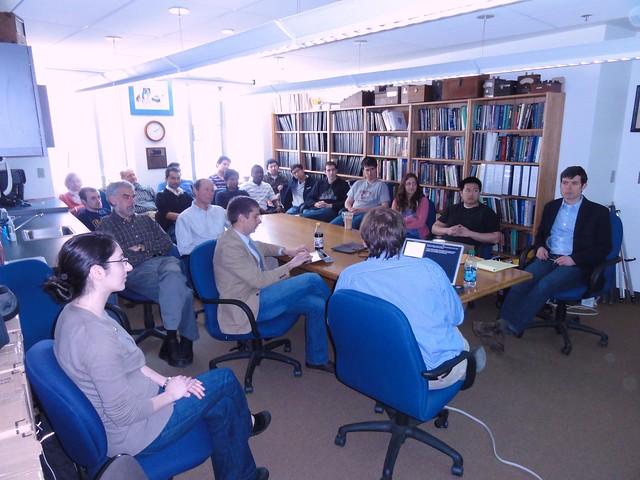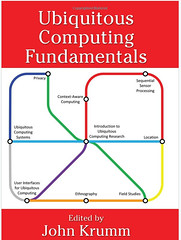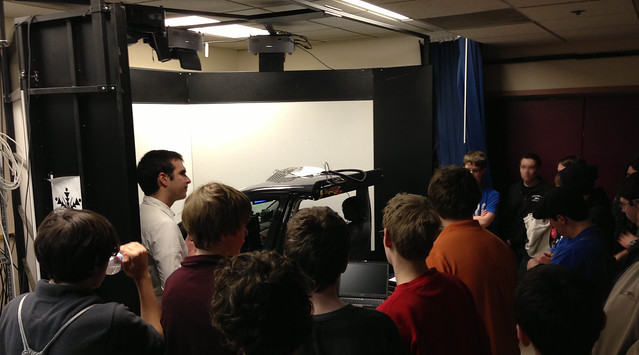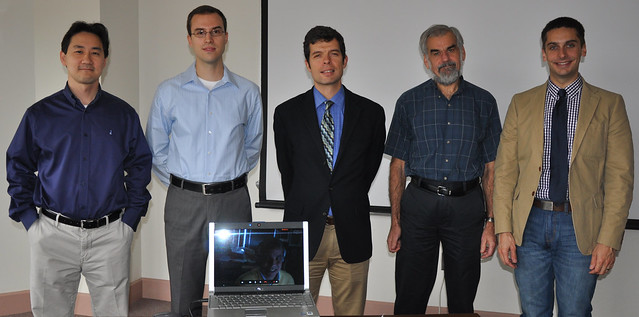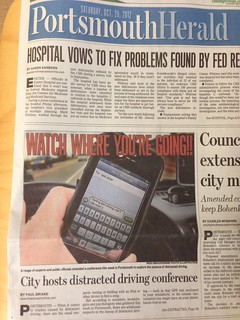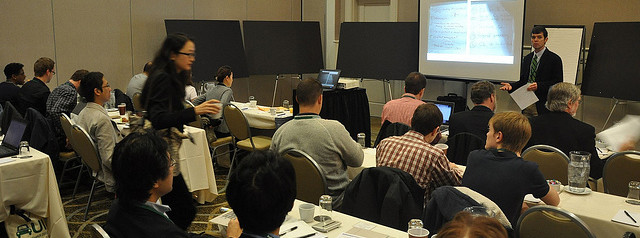
Background
The 2012 Cognitive Load and In-Vehicle Human-Machine Interaction workshop (CLW 2012) was held in conjunction with AutomotiveUI 2012 in Portsmouth, NH. The workshop was the second CLW in a row – CLW 2011 was held at AutomotiveUI 2011 in Salzburg, Austria.
Overview
Over 35 people from government, industry and academia attended CLW 2012.
For CLW 2012 the organizers made the decision to involve a large number of experts in the workshop, instead of only including contributions by authors responding to our CFP. Thus, the CLW 2012 program included three expert presentations, as well as a government-industry panel with four participants. Each of these expert participants discussed unique aspects of estimating and utilizing cognitive load for the design and deployment of in-vehicle human-machine interfaces.
Bryan Reimer opened the expert presentations with a discussion of the relationship between driver distraction and cognitive load. Next, Bruce Mehler discussed practical issues in estimating cognitive load from physiological measures. Finally, Paul Green discussed how cognitive load measures might fit in with the NHTSA visual-manual guidelines.
The expert presentations were followed by a government-industry panel. Chris Monk (Human Factors Division Chief at NHTSA) presented the NHTSA perspective on cognitive load and HMI design. Jim Foley (Toyota Technical Center, USA) introduced the OEM perspective. Scott Pennock (QNX & ITU-T Focus Group on Driver Distraction) introduced issues related to standardization. Garrett Weinberg (Nuance) focused on issues related to voice user interfaces.
Following these presentations, and the accompanying lively discussions, workshop participants viewed eight posters.
Evaluation
At the end of the workshop we asked participants to indicate their level of agreement with these four statements:
- I found the workshop to be useful.
- I enjoyed the workshop.
- I would attend a similar workshop at a future AutomotiveUI conference.
- This workshop is the reason I am attending AutomotiveUI 2011.
The responses of 13 participants are shown below (the workshop organizers in attendance did not complete the questionnaire). They indicate that the workshop was a success.

Next steps
Since the conclusion of CLW 2012 co-organizers Peter Froehlich and Andrew Kun joined forces with Susanne Boll and Jim Foley to organize a workshop at CHI 2013 on automotive user interfaces. Also, a proposal for CLW 2013 at AutomotiveUI 2013 is in the works.
Thank you presenters and participants!
The organizers would like to extend our warmest appreciation to all of the presenters for the work that went into the expert presentations, the panel discussion, and the poster papers and presentations. We would also like to thank all of the workshop attendees for raising questions, discussing posters, and sharing their knowledge and expertise.
You can see more pictures from CLW 2012 on Flickr.
This report is also available on the CLW website.


